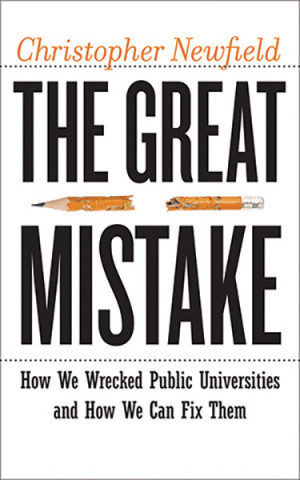
Reviews
An extraordinarily well-researched, well-written, and important book by one of the most eminent scholars of higher education writing today. In elegant and insightful prose, Gumport provides abundant evidence not only of the myriad causes for the rise of industry logic, but also of the many successful efforts of administrators and governing boards to preserve and even strengthen those fundamental public virtues of civic responsibility, diversity, and the preservation of liberal arts. Finding valuable patterns in the bewilderingly complex nonsystem of US public higher education, Academic Fault Lines is comprehensive and informed by rich qualitative research.
A comprehensive, conceptually coherent, research-informed portrayal of the remarkable transition toward industry logic in all sectors of higher education during the late twentieth century. Gumport's writing is some of the best I've seen in our field: clear, concise, and evocative but also appropriately qualified and rigorous. The chapters on the nine case study campuses are perceptive and convincing. An important contribution.
This is a tour-de-force review of institutional and sociological theories that interprets college case studies of the ascendancy of industry logic over a 30-year time period. With a focus on social discourses of campus administrators and faculty and detailed document analysis, Dr. Gumport creates a nuanced account of the way industry ideologies unevenly shaped campuses' academic restructuring.
While acknowledging that higher education in the United States has been moving during the last few decades from an academic to a more commercial 'logic,' or rationale, Patricia Gumport marshals in-depth evidence from nine case studies of a diverse set of colleges to point out that changes undergone by colleges are much more varied and nuanced than is widely recognized. Calling on not only her extensive scholarly and research skills but also a decade of upper-tier administrative experience, Gumport has crafted a thought-provoking examination of the power and potential of skilled administrators and faculty leaders to shape their own fate.
Book Details
Online Materials
Preface
Acknowledgments
Introduction. Points of Departure
1. Conceptual and Empirical Anchors: Studying Institutional Change
Part I. The Ascendance of Industry Logic
2. Built to Serve
Online Materials
Preface
Acknowledgments
Introduction. Points of Departure
1. Conceptual and Empirical Anchors: Studying Institutional Change
Part I. The Ascendance of Industry Logic
2. Built to Serve
3. State-Level Expectations
4. Forces Converging to Advance Industry Logic
Part II. Community Colleges
5. Beyond the Demand-Response Scenario
6. Harmonizing Educational Identities
Part III. Comprehensive State Universities
7. Reconciling Competing Mandates
8. Persevering through Strategic Necessities
Part IV. Research Universities
9. In Pursuit of Excellence
10. Pursuing Priorities and Striving for State of the Art
Conclusion. Managing for Legitimacy: Moving beyond Academic Fault Lines
Notes
Works Cited
Index






